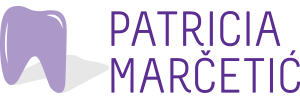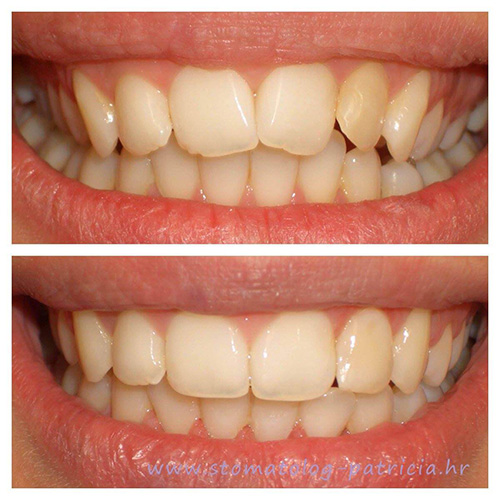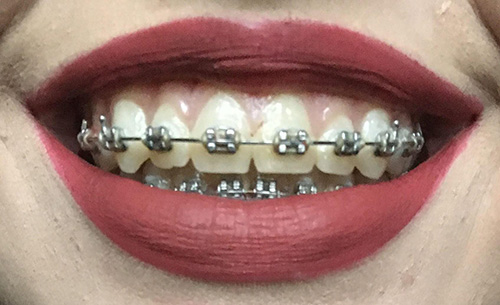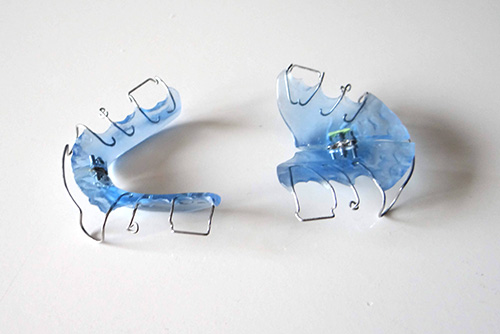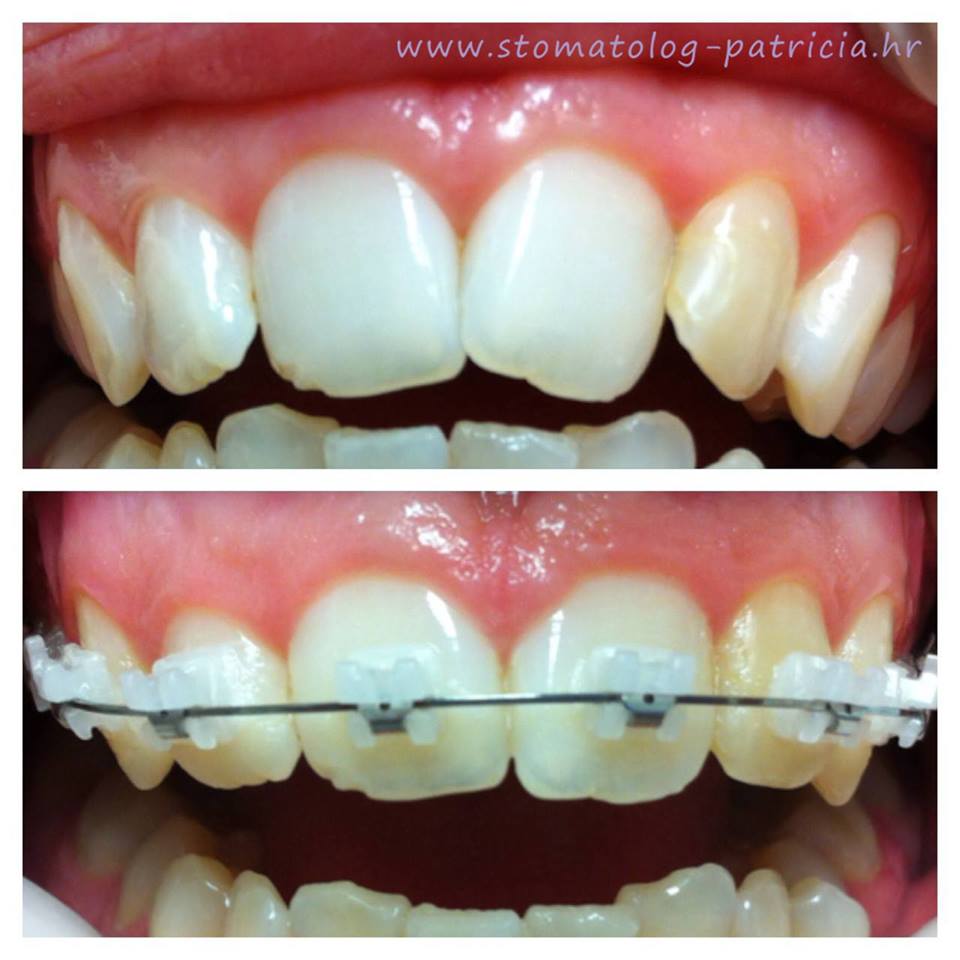ORTHODONTICS
What is orthodontics?
Orthodontics is a branch of dentistry that deals with the diagnosis, prevention and correction of malpositioned teeth and irregular relations between the upper and the lower jaw.
Why to opt for orthodontic treatment?
Most patients turn to orthodontists for help when they want to improve the appearance of their teeth and thereby their entire facial appearance, being aware of the fact that face aesthetics is important in all segments of life. Nice teeth can significantly increase a person’s self-confidence. However, it should be pointed out that the regular relation of the teeth and jaws, apart from being aesthetically important, also has a positive effect on the health of the entire stomatognathic system. Not only does the orthodontic treatment provide You with a beautiful smile, but it also contributes to a more proportionate facial appearance, regular mastication, speech improvement, better oral hygiene maintenance and decreases the risk for the development of tooth decay and periodontal disease.
Is there an age limit for orthodontic treatment?
There is no age limit for orthodontic treatment. However, an adult’s treatment takes a little longer than a child’s treatment. The ideal time for orthodontic treatment in children is between 9-14 years of age, due to greater therapeutic potential in puberty children than in adult patients. Nowadays the treatment is usually postponed until the age of 12, when all permanent teeth have erupted and can be treated with a fixed orthodontic appliance in the shortest possible time.
What are the indications for early orthodontic treatment in children?
Indications for orthodontic treatment in children:
- improving occlusal relationships of teeth in the crossbite, open bite, reverse overlap, deep bite, as well as the displacement and inclination of individual teeth
- quitting unfavourable habits (thumb or finger sucking, non-anatomic pacifiers,the prolonged use of bottles, mouth breathing, sucking objects, pressing tongue to teeth, holding a pencil in the mouth during study, leaning the face on the hand, placing the hand under the cheek during sleep, squatting sleep mode, etc.)
- corrective procedures to improve aesthetics and speech
- correction of irregular position of individual teeth during compression (compaction) and diastema (spacing)
- positioning of the “sunken” teeth in the dental arch or tooth extraction if they are stuck
- correction of the dental arch in case of excessive number of teeth, tooth loss, premature loss or congenitally missing teeth, time synchronization and the exchange rate of primary teeth to permanent teeth …
What are the indications for orthodontic treatment in adults?
Indications for orthodontic treatment in adults:
- preparation for fixed or mobile prosthetic restorations
- corrective procedures to improve aesthetics and speech
- improving occlusal relationships of teeth in the crossbite, open bite, reverse overlap, deep bite, as well as the displacement and inclination of individual teeth
- establishing optimal inter-jaws relationships
- correction of irregular position of individual teeth during compression (compaction) and diastema (spacing)
- unloading the jaw joints
- positioning of the “sunken” teeth in the dental arch or tooth extraction if they are stuck
- rearrangement of the remaining teeth in the case of tooth loss or congenitally missing teeth
How long does orthodontic treatment take?
The time required for the treatment is individual and depends on multiple factors, but usually it takes about 1.5-2 years.
How to preserve the outcome of the treatment?
Following the treatment, once the desired outcome is achieved, You will be given a retention appliance by Your orthodontist in order to maintain the teeth in their new position. The most common retainers are invisible appliances which are fitted over upper and lower teeth, after they have been made from final models, or the anterior teeth are joined together by wires on their lingual surface, which makes them completely invisible.
When is the best time for the first orthodontic visit?
It is recommended that the first orthodontic visit should be somewhere around the age of 6 or 7, when first permanent teeth appear. Based on the clinical examination and orthopantomogram (a panoramic X-ray of jawline) the orthodontist will determine the relation between primary and permanent teeth, whether all permanent teeth buds are present, whether the upper and lower jaw relationship is favourable, whether there are any unfavourable habits (tongue thrusting, finger sucking, mouth breathing, etc.) and will advise parents on whether the treatment is necessary. If it is, the orthodontist will determine the best time to start the treatment in order to avoid wearing braces for too long unnecessarily. In any case, with early prevention and treatment, any irregularities of the jawline and teeth, can be corrected in a quick and successful manner.
How to determine whether the treatment is necessary?
In order for the orthodontist to determine whether the treatment is necessary it is required to perform the clinical examination of soft and hard oral tissues, to take intra and extra-oral photographs, to perform X-ray analysis which includes the analysis of the orthopantomogram (a panoramic X-ray of the upper and lower jaw) and very often of the lateral cefalogram as well (a profile x-ray of the skull and soft tissues). The impressions of the upper and lower jaw are also required so that the orthodontist, based on the model and other aforementioned diagnostic methods, can get a detailed insight into both patient’s dental and facial appearance in order to determine the best treatment plan for that particular patient. Namely, alterations of teeth positions usually cause changes in facial appearance, which is another way how orthodontic treatment can successfully improve overall facial aesthetics. Sometimes in adult patients with severe skeletal anomalies (progenia, facial asymmetry) orthodontic therapy is not sufficient and orthognathic surgery is required to achieve the desired outcome. In that case, the treatment plan is made in collaboration with a maxillofacial surgeon.
What are the different types of orthodontic appliances?
There are fixed and mobile orthodontic appliances. Mobile appliances can be removed from the mouth and returned back by the patient, while fixed appliances are attached to the teeth. Fixed, immobile appliances are attached directly in the mouth by the orthodontist and removed after the orthodontic treatment has finished, while mobile, removable appliances are made in a dental laboratory. The choice and the type of appliance (mobile, fixed) depends on the individual diagnosis and the age at which the treatment started.
MOBILE ORTHODONTIC APPLIANCES
What are mobile orthodontic appliances and when are they used?
Mobile orthodontic appliances are devices which can be taken in and out by the patient. They are made in the dental laboratory based on the impression taken in the dental office by an orthodontist. In the past mobile appliances represented the main orthodontic therapeutic method, but now they are usually replaced by fixed appliances. Their use is limited to certain phases in the treatment of some disorders, most commonly in children with mixed dentition (when primary teeth are also present). Mobile appliances can also be used as retainers to maintain the treatment results.
What are the types of mobile orthodontic appliances?
The most common mobile orthodontic appliances are:
- Active plate; a type of mobile orthodontic appliance which is used for each jaw separately. It contains different wire components and sometimes a screw which is turned by the patient with a key provided by the orthodontist. They are indicated when it is required to reposition individual teeth and groups of teeth, expand and shape jaws and dental arches, modify growth during mixed dentition or retain (maintain) the obtained results after the orthodontic treatment.
- There are also so-called functional bimaxillary appliances (activator, bionator, etc.) which consist of just one part for both jaws and are unstable in the mouth. They are used to correct irregular jaw relations, unfavourable habits (finger sucking, tongue thrusting, mouth breathing, etc.) and irregular orofacial functions (swallowing, breathing, speaking). These appliances are efficient only in growing patients.
What is the daily wear time of mobile appliances?
In order to achieve the desired result, the daily wear time of mobile appliance should be minimally 14-16 hours. Regular check-ups to “activate” the appliance and the cooperation of the children during the treatment are also important. Maintenance of the oral health during orthodontic treatment is achieved by adequate oral hygiene, following the rule which says that clean mobile orthodontic appliance is always put on clean teeth.
FIXED ORTHODONTIC APPLIANCES
What are fixed orthodontic appliances?
Fixed orthodontic appliances are devices that correct orthodontic anomalies by exerting pressure on the teeth through the system of components which are fixed to the tooth surface: brackets (metal or aesthetic), archwires and other elements which are changed during check-ups if necessary. Brackets are bonded to each tooth and support arch wires. Apart from brackets, rings or tubes can also be attached to the teeth, usually first and/or second molars in each jaw, which function as anchors for the orthodontic appliances. Archwires represent a changeable component whose function is to move the teeth into the desired positions. The wires used consist of sophisticated alloys which move the teeth with light, continuous forces for optimum physiological response with no damaging effects to the teeth and their supporting structures, resulting in minimal pain and discomfort in the first days of the treatment. They are bonded to brackets by elastic ties or light metal wires, although nowadays self-ligating brackets are the most common type. Self-ligating brackets exert lower forces and produce less friction. Such a mechanism also reduces the treatment time and extends the time between regular check-ups (ideally every 6-8 weeks). Fixed orthodontic appliances are placed directly into the patient’s mouth by an orthodontist. Nowadays they are appliances of choice for treating most orthodontic anomalies, especially in adult patients. Fixed orthodontic appliances are almost always attached on both the upper and lower jaw to achieve favourable jaw relations and the best possible occlusion. However, depending on the type of anomaly, the fixed appliance can be attached to one segment only in the dental arch (e.g. anterior teeth, from the canine to the second molar). Prior to orthodontic treatment, all teeth need to be repaired and hygiene maintained because all undesirable changes (gum inflammation, tooth decay, enamel erosion) are a direct consequence of inadequate hygiene.
What are lingual orthodontic appliances?
Lingual orthodontic appliance is a special type of fixed appliance. It is attached to the posterior (lingual) surface of the tooth. It is completely invisible and convenient for all those who want to straighten their teeth in a discrete way. It is ideal for adult patients with a relatively harmonious bite. Brackets are specifically designed to be small and thin which minimizes tongue irritation which disappears during first days of therapy. However, this type of orthodontic treatment has both advantages and disadvantages as well. While the main advantage is its aesthetics, the disadvantage lies in it being unsuitable for all orthodontic anomalies. Working with lingual brackets is much more demanding than working with external labial brackets, it requires exquisite precision of the orthodontist, more frequent check-ups and the treatment lasts longer, thereby increasing its cost.
Why are regular check-ups during orthodontic treatment important?
During each visit, if necessary, the orthodontist will change the archwires and bands or attach other active components to the appliance itself. It is important to mention that patients should be cooperative and attend regular check-ups, usually every 4-8 weeks. If the patient is not willing to cooperate, does not maintain oral hygiene and does not attend regular check-ups, the treatment may be ineffective, unnecessarily prolonged and may cause adverse side-effects.
What are the most common symptoms following the start of orthodontic treatment?
During the first days of orthodontic treatment patients may feel pain, sensitivity and discomfort, but it is a normal reaction caused by teeth repositioning and will disappear after a few days. It is also possible and normal for teeth to feel loose. In case one of the brackets falls off, it is necessary to reattach it as soon as possible in order for the appliance to function properly (go to see the orthodontist and take the bracket with you).
Why is good oral hygiene during orthodontic treatment important?
Maintaining excellent hygiene during orthodontic treatment is extremely important. All instructions on oral hygiene are given by the orthodontist. Fixed appliance alone causes dental plaque deposits and food remains which, if not removed after each meal, can eventually lead to enamel demineralization (demineralised white spots appear on the tooth surface), tooth decay and gum inflammation. Thus, fixed appliances are not used for patients with poor oral hygiene, and the treatment can also be terminated at the request of the orthodontist, if oral hygiene is considered inadequate. Sometimes during orthodontic treatment professional dental cleaning and polishing will be required due to easily formed dental plaque deposits.
Which orthodontic appliances are the least visible?
Invisalign® and similar techniques (e.g. Orthocaps) as well as lingual orthodontic appliances are the least visible orthodontic appliances, or techniques. They developed as a response to an increasing need of adult people for orthodontic therapy, whereby their teeth are straightened by almost invisible appliances.
INVISALIGN
What is Invisalign?
Invisalign® is an American method of straightening teeth using clear, mobile appliances (aligners, splints) made individually for Your teeth with 3-D computer imaging technology. Clear aligners help Your teeth move gradually into the projected final (desired) position over a certain period of time. Practical, painless and easily removable, Invisalign® appliance transforms Your smile without compromising the quality of Your life.
Invisalign® was born in the USA in 1997. The technology is used in more than 80 countries, including Croatia. There are almost 2 million people who, to date, have resorted to Invisalign® to correct and straighten their teeth. This appliance for the orthodontic therapy consists of a number of plastic aligners (15 to 40 depending on the case) that are manufactured individually for each patient by using computer technology. The aligners are clear, and the patient will have to keep them 24 hours a day for two weeks, except when eating or brushing their teeth. Each aligner moves the teeth gradually into the desired position. Although there are many copies of this system, Invisalign® has the largest number of patents in this area and works continuously to improve its technology.
What are the advantages of Invisalign®?
The advantages of Invisalign® are: aesthetics (aligners are almost invisible), they are comfortable to wear and removable (which enables easier hygiene maintenance and consumption of all foods) as opposed to fixed appliances. Furthermore, due to computer-aided technique, the patient is able to see virtual results of the treatment prior to its start; what the teeth will look like after the treatment and the whole treatment plan.
What are the limitations of Invisalign®?
The limitations of Invisalign® are: the inability to correct severe orthodontic anomalies, or to correct them as successfully as with fixed orthodontic treatment. The results of the treatment also depend on the patient’s commitment (aligners should be worn minimally 22-23 hours a day).
How to determine whether Invisalign® treatment is possible?
A whole set of diagnostic instruments including X-rays and photographs is used in order to determine whether it is possible to treat a certain orthodontic anomaly by Invisalign. If the treatment is possible, the impressions of one or both jaws are taken. They are then sent to Invisalign® institute, scanned, and the 3D digital model is made which enables us to move the teeth virtually into the desired positions. Finally, a set of aligners is manufactured to allow gradual teeth movement.
What is pre-prosthetic orthodontic treatment?
Pre-prosthetic orthodontic treatment is a treatment using one from a range of orthodontic appliances before undergoing the prosthetic treatment. Nowadays we strive to achieve a naturally beautiful and healthy smile with minimal drilling. In patients who require some form of prosthetic-aesthetic treatment of the teeth which are in unfavourable positions/relations, it is desirable to first treat those teeth orthodontically. The most commonly used treatment is the fixed orthodontic treatment due to its fast results. It can last a few months and usually it is not necessary to attach the appliance to both jaws or all teeth in a single jaw, but to one segment only. The teeth are moved into positions which require minimal drilling for desired prosthetic restorations (veneers, crowns or dental bridges).
What are the phases of orthodontic treatment?
- Each orthodontic treatment starts with the initial examination and medical history taking which allows the assessment of the status of Your oral health, Your general health and Your oral hygiene, as well as Your motivation and expectations. Based on the necessary diagnostics which includes extraoral and intraoral examination, X-ray and photograph analysis and measurements for model making, the orthodontist determines the best way to treat Your orthodontic anomaly. Orthodontic techniques are then presented, so You can choose the most acceptable solution. Before the start of the treatment, all teeth should be repaired.
- In the next phase the patient is presented with an orthodontic appliance or the appliance is attached to their teeth. The instructions on the orthodontic treatment and oral hygiene maintenance are also given by the orthodontist. In our dental office orthodontic treatment is performed by an excellent orthodontic specialist.
- Regular check-ups follow every 4-8 weeks so as to activate the appliance in a way to achieve the desired result.
- At the end of the active phase, another orthodontic appliance is made to retain the achieved result. The orthodontist determines how this appliance will be worn and for how long.
Why choose orthodontic treatment in OUR practice?
-
Orthodontic treatment in our practice is performed exclusively by an excellent orthodontic specialist.
-
We try to make you feel comfortable and relaxed in our office,without any fear.
-
We respect your wishes relating to the health and beauty of your future smile and try to fulfil them completely.
-
Our goal is to make your smile functional and aesthetically perfect.
-
All types of orthodontic treatment will be performed with high-quality materials.
-
The work in your mouth will be painless and safe, we will do our best to make it as comfortable as possible and our service as good.
-
At any moment we are available to you for advice and consultation via mobile phone, e-mail and social media.
-
We try to keep our appointments.
-
You can pay in cash, but also in interest free instalments: American Express up to 12 instalments, Diners up to 6 instalments, Erste & Steiermärkische banka Maestro and MasterCard up to 12 instalments.
-
There is free parking in front of the office.
If you think we can meet your criteria, feel free to contact us and make your appointment.
If you’re unable to find an answer to your question about oral orthodontic treatment, dental health or dental services, please feel free to contact us.
We are at your disposal!
| Radno vrijeme
PON, SRI, PET 9:00-16:00
UTO, ČET 13:30-20:30
☎ +385(0)1 4822 137
